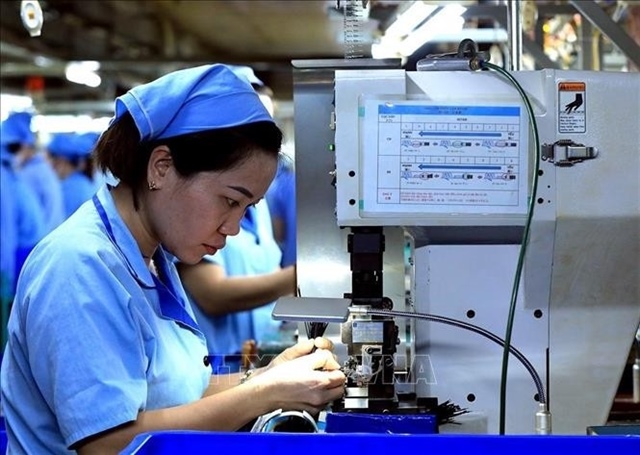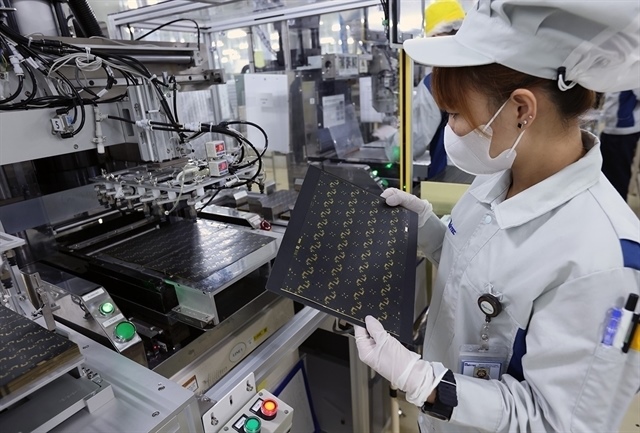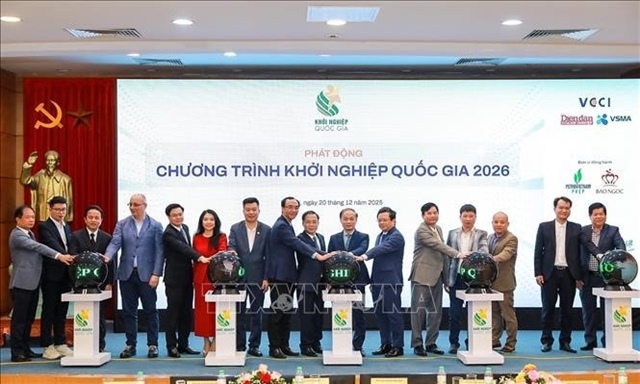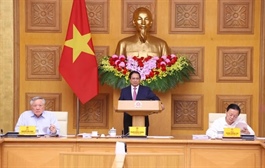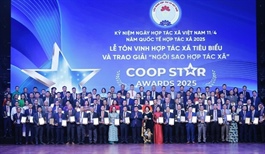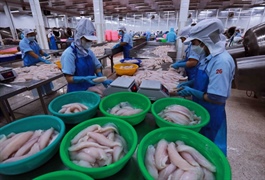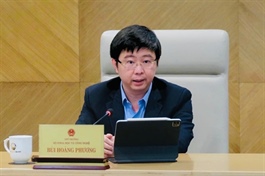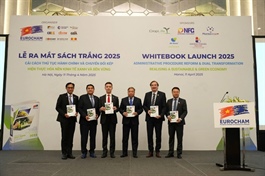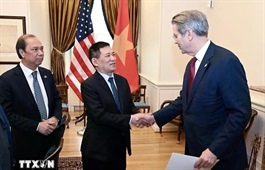China, Vietnam to consolidate trade ties
China, Vietnam to consolidate trade ties
Amid rising protectionism and unilateral challenges, China and Vietnam are pressing ahead with industrial upgrading and digital transformation, positioning themselves to tap into new growth opportunities across key sectors such as advanced manufacturing, green energy, smart logistics, e-commerce and regional supply chain integration, they said.
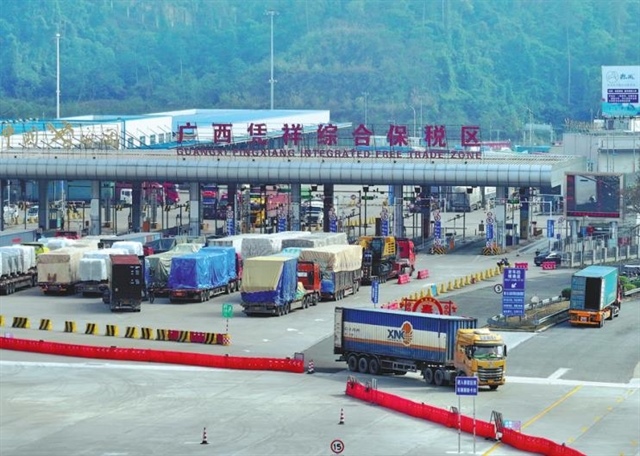
Trucks make their way through customs at the Guangxi Pingxiang Integrated Free Trade Zone in Pingxiang, Guangxi Zhuang autonomous region, near the China-Vietnam border. XINHUA Photo |
The economic and trade ties between China and Vietnam are expected to rise to a new level, driven by the two countries' highly complementary trade structures, Vietnam's modernisation drive and the growing influence of the Regional Comprehensive Economic Partnership, according to market watchers and exporters.
Amid rising protectionism and unilateral challenges, China and Vietnam are pressing ahead with industrial upgrading and digital transformation, positioning themselves to tap into new growth opportunities across key sectors such as advanced manufacturing, green energy, smart logistics, e-commerce and regional supply chain integration, they said.
United by common aspirations for sustainable growth and economic resilience, the two countries are on track to forge even deeper and more dynamic economic ties in the years to come, said Wan Zhe, a professor specialising in regional economic development at Beijing Normal University.
Bilateral business relations have witnessed remarkable progress, especially in recent years, with Vietnam introducing key national strategies such as the National Green Growth Strategy for 2021-2030, vision towards 2050; the National Strategy on R&D and Application of Artificial Intelligence; and the National Strategy for 4th Industrial Revolution.
Wan said that these forward-looking initiatives have significantly enhanced Vietnam's appeal as a destination for investment and innovation, attracting a substantial influx of Chinese and foreign capital and technologies over the past several years.
"This growing synergy has laid a strong foundation for deeper economic and technological collaboration between the two countries," she added.
Vietnam has become a key overseas investment destination for China. In 2024, from January to August, Chinese companies invested $1.97 billion in the Southeast Asian country, maintaining a rapid rate of growth, according to the latest data released by China's Ministry of Commerce.
Benefiting from a booming intermediate goods trade, the rising freight volume on the China-Vietnam Railway and substantial gains resulting from the RCEP and the Belt and Road Initiative, China-Vietnam trade surged 14.6 percent year-on-year to 1.85 trillion yuan ($254.05 billion) in 2024, statistics from China's General Administration of Customs showed.
This momentum continued in the first two months of this year, with the value of bilateral trade rising 8.2 per cent on an annual basis to 270.96 billion yuan, customs data showed.
China's exports to Vietnam include machinery, telecommunication equipment, electronic components, industrial raw materials, trains, ships, trucks, household appliances and construction materials.
In addition to agricultural and aquatic products such as seafood, fruits, coffee and rice, Vietnam's exports to China include smartphones, computers, rubber, footwear, garments and furniture.
In the medium to long term, China and Vietnam are more likely to deepen industrial complementarity and division of labor rather than engage in direct competition, said Gao Lingyun, a researcher at the Institute of World Economics and Politics, which is affiliated with the Chinese Academy of Social Sciences in Beijing.
"This is because both countries are at different stages of development and have distinct strengths," said Gao, adding China leads in high-end manufacturing and technological capabilities, while Vietnam offers advantages in assembly industries and young and high-quality workers.
On top of this, free trade deals with various economies, such as the EU (European Union)-Vietnam Free Trade Agreement and Comprehensive and Progressive Agreement for Trans-Pacific Partnership, have opened up opportunities, he added.
Echoing that sentiment, Lan Qingxin, a professor specialising in cross-border investment studies at the University of International Business and Economics in Beijing, said that compared with other Southeast Asian countries as well as India and Mexico, Vietnam holds a competitive edge and market potential due to its proximity to China and its friendly foreign investment policies.
This complementary dynamic fosters a win-win partnership, reinforcing the depth and resilience of China-Vietnam economic ties, said Lan.
Ningbo Dafa Chemical Fiber Co, a textile and chemical raw materials manufacturer in Ningbo, Zhejiang province, has been actively exploring new possibilities in the Vietnamese market.
"Vietnam has a well-developed furniture manufacturing industry, which drives strong demand for textile yarns and synthetic fiber materials. Our products are mainly used for furniture padding and bedding production," said Wang Ling, the company's sales director.
Ningbo Dafa's exports to Vietnam grew by 10.3 percent year-on-year to 20.64 million yuan in the first two months of this year, according to Ningbo Customs.
- 17:25 14/04/2025


